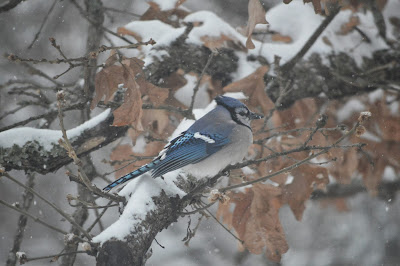When the winter weather took a break I had high hopes for the day. Cabin fever had set in and I wanted to be out and about. But at 9am the baby threw up and I discovered both children had mild fevers.
At almost 5pm, I felt like I was going to snap. The children, while still contagious, we not acting sick at all but running around the house and obsessing about watching yet more television.
In a burst of frustration I packed them into the car and drove to a nearby nature trail.
Almost immediately upon stepping into the woods and walking down the trail, I felt relief! The children, similarly, began to speak in a softer tone and walked with more purpose and focus.
I stopped along the trail and whispered. "Let's listen for birds."
Both children mimicked me and we listened. Immediately we heard a distant call.
"That is the red-headed road runner woodpecker owl." My 5 year old science nerd informed me.
"Are you sure?" I asked. "Because I thought it was a cardinal."
We listened again. This time we heard a woodpecker and though I don't know for sure, my son said it was the "red-headed woodpecker" and it could have been.
For the rest of the hike we remained (more or less) quite. We found a blue wing feather from a blue jay and a stick covered in turquoise fungus as well as some fuzzy brown galls.
Soon, however, darkness approached. We turned around and headed home as the wind shifted and the temperature dropped rapidly. The storm was moving in. At this moment, a barred owl called. We all froze and listened to the distinct whoo, whoo...
By the time we got back home, only about 40 minutes had passed, but we were all different people. As if the songs of wild birds had washed us of our distractions and we were born anew!













